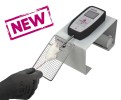Authors
J.P. Mallm, J.A. Tschäpe, M. Hick, M.A. Filippov, U.C. Müller.
Lab
University of Heidelberg, Institute of Pharmacy and Molecular Biotechnology, Department of Bioinformatics and Functional Genomics, Heidelberg, Germany.
Journal
Genesis
Abstract
Proteolytical cleavage of the beta-amyloid precursor protein (APP) generates beta-amyloid, which is deposited in the brains of patients suffering from Alzheimer's disease (AD). Despite the well-established key role of APP for AD pathogenesis, the physiological function of APP and its close homologues APLP1 and APLP2 remains poorly understood. Previously, we generated APP(-/-) mice that proved viable, whereas APP(-/-)APLP2(-/-) mice and triple knockouts died shortly after birth, likely due to deficits of neuromuscular synaptic transmission. Here, we generated conditional knockout alleles for both APP and APLP2 in which the promoter and exon1 were flanked by loxP sites. No differences in expression were detectable between wt and floxed alleles, whereas alleles were obtained upon crossing with Cre-transgenic deleter mice. These mice will now allow for tissue and time-point controlled knockout of both genes.
BIOSEB Instruments Used:
Grip strength test (BIO-GS3)

 Douleur - Allodynie/Hyperalgésie Thermique
Douleur - Allodynie/Hyperalgésie Thermique Douleur - Spontanée - Déficit de Posture
Douleur - Spontanée - Déficit de Posture Douleur - Allodynie/Hyperalgésie Mécanique
Douleur - Allodynie/Hyperalgésie Mécanique Apprentissage/Mémoire - Attention - Addiction
Apprentissage/Mémoire - Attention - Addiction Physiologie & Recherche Respiratoire
Physiologie & Recherche Respiratoire
 Douleur
Douleur Système Nerveux Central (SNC)
Système Nerveux Central (SNC)  Neurodégénérescence
Neurodégénérescence Système sensoriel
Système sensoriel Système moteur
Système moteur Troubles de l'humeur
Troubles de l'humeur Autres pathologies
Autres pathologies Système musculaire
Système musculaire Articulations
Articulations Métabolisme
Métabolisme Thématiques transversales
Thématiques transversales SFN2024: Venez rencontrer notre équipe sur le stand 876 à Chicago
SFN2024: Venez rencontrer notre équipe sur le stand 876 à Chicago 